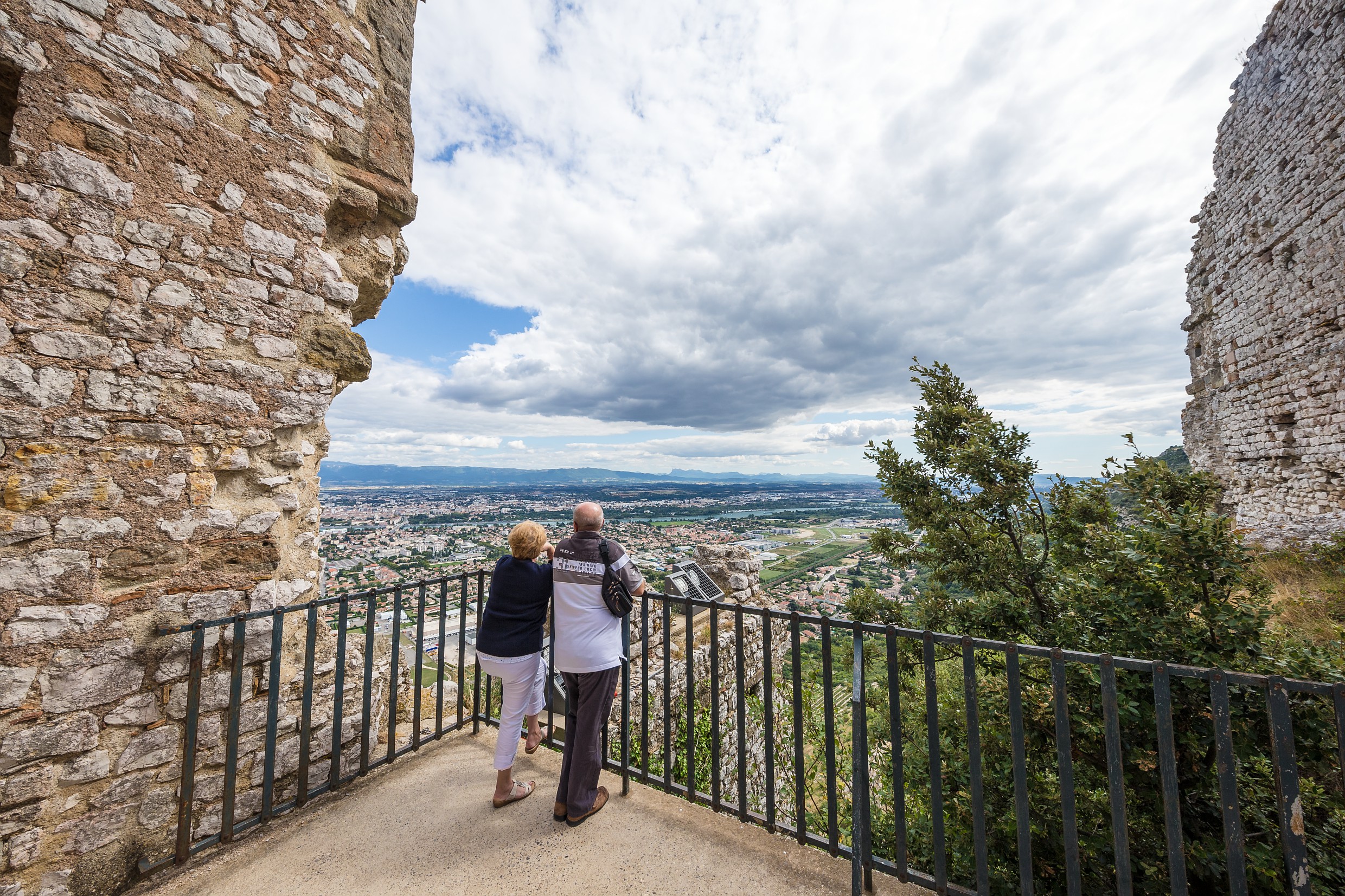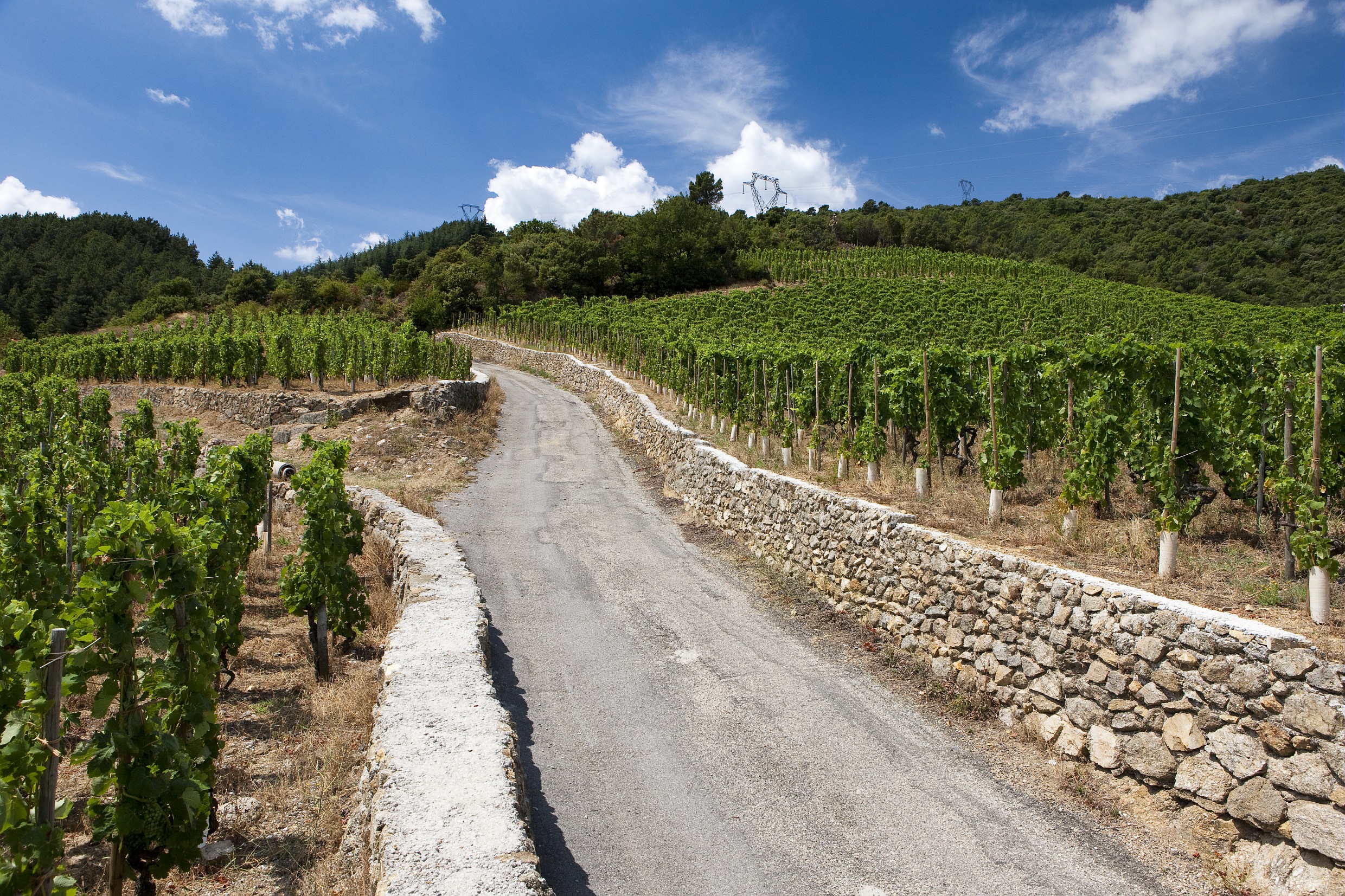- As a couple
- With friends
- With family
- Travelling solo
Cornas, Saint Péray and Saint Joseph – for Added Sparkle!
This patchwork of micro-vineyards nestles tightly together on the right bank of the Rhône. The slopes here are dizzyingly steep, and vineyard tasks are performed manually, as in days gone by. The vines produce a diverse range of distinctive wines, from the powerful reds of Saint-Joseph and Cornas to the classic whites and sparklers of Saint-Péray. There’s nothing ordinary about this demanding land, where viticulture and heritage are closely intertwined.
A popular local saying claims that a single person can cultivate no more than two hectares of vines here. It doesn’t sound like much, does it? But these hillsides are so steep, and the plots so small, that all the work has to be done either by hand or with the help of mules, just like in the old days. It takes patience and dedication to bring out the full potential of the soils in these vineyards which rise to altitudes of 500 metres, and to give the wines of Cornas, Saint-Péray and Saint-Joseph their delightful freshness. But it’s not all about vineyards here – far from it. The past has left an extraordinary legacy too, as illustrated by the many historic châteaux perched atop the hills.

Contents
• A world of wine and feudal barons
These hillsides have been home to grapevines since ancient times, planted on countless terraces supported by the low stone walls known in Cornas as chaillées. The vast swathes of vineyard create a breathtaking landscape and produce an array of powerful wines. It’s no coincidence that Cornas AOC wines are made exclusively from Syrah, or that the Saint Joseph Crus are known for their brooding personality.
Saint Péray wines, meanwhile, tend to be livelier and more vibrant: the appellation produces only whites, 6% of which are sparkling. Sparkling wines were first made in Saint Péray at Chateau de Beauregard, to a recipe inspired by the Champagne method. They were a huge success, and graced the tables of countless 19th-century heads of state, including the Tsar of Russia, the Queen of England and even the Pope himself!
Taking advantage of the hilly terrain, the Seigneurs of France built their castles in strategic positions, offering sweeping views over the surrounding countryside, perfect for keeping a lookout over their domains – like the mediaeval Château de Crussol, perched on a rocky spur, keeping a watchful eye on the Rhône Valley, and, of course, the vineyards.

• Getting away from it all
Whether you’re a hiker, mountain biker or horse-rider, there’s no shortage of trails and footpaths on these steep hillsides. One of the most popular IS the Sentier de l’Appellation Cornas, a meticulously signposted path through the heart of the vineyards with a host of information panels to help you explore. This two-and-a-half hour hiking route takes you through the vineyards to a series of lookout points, where the views over the Rhône are positively spectacular. It’s a piece of nature not to be missed.
-> As an added bonus: Dogs are allowed along the entire route.
If you prefer a shorter but equally spectacular walk, head to Domaine du Tunnel in the village of Saint-Péray, where winegrower Stéphane Robert has converted an ancient railway tunnel some 170 metres long into a winery and ageing cellar. There are guided tours to help you explore this unique site, which include a walk through the vineyards and a wine tasting session. It’s a unique experience, and a great place to cool off in summer.
-> As an added bonus: Enjoy breathtaking vistas over the Rhône and an unbeatable view of Château de Crussol.

• Wine, jazz and a château setting
Atop the rocky spur where it has proudly stood since the 12th century, Château de Crussol can be seen literally for miles – even from the valley itself. It’s a very special place, reflecting centuries of history in its ancient dry-stone walls as well as a unique natural environment, whose biodiversity has earned it both Natura 2000 and Protected Natural Environment (ENS) status.
And it’s here, against this backdrop of honeyed stone and lush greenery, that a unique musical event, aptly named In Vino Verijazz, takes place every summer. In July, this mediaeval fortress is transformed into a vast, open stage and comes alive to the rhythm of live jazz. To complement the shifting tempo, from lively to serene and back again, there are tastings of Saint-Péray, Cornas and Saint-Joseph appellation wines, and food trucks to complete the picture. We love the way this historic venue manages to seamlessly blend the pleasures of both sound and flavour.
-> As an added bonus: Reasonable entry fee (€7) and a free shuttle bus up to the Château
-> More tasting experiences: For a more traditional tasting experience, la Maison de Vins de Crussol also hosts workshops focusing on the history of the appellations, winemaking methods and a sensory approach to wine tasting. There are so many delicious, informative ways to get to know these three iconic Northern Rhône Valley Crus!














